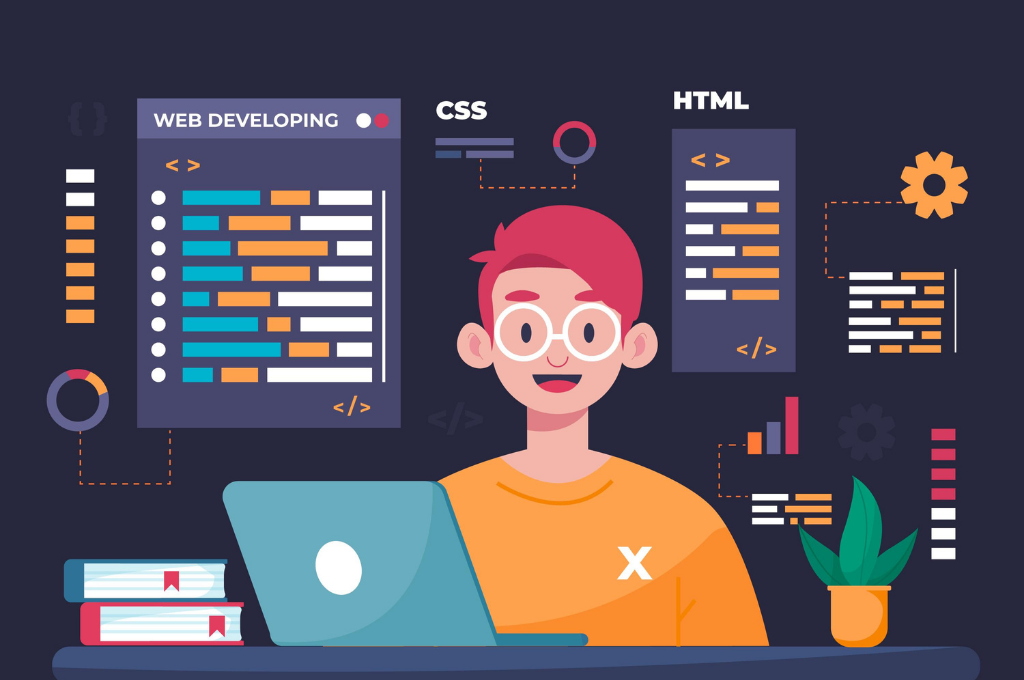Responsive web design is no longer a “nice-to-have”—it’s the standard expectation for every digital experience. With more than 60% of global web traffic coming from mobile devices and enterprises racing to deliver seamless, device-agnostic interfaces, building adaptive digital platforms is now mission-critical. CEOs, CTOs, and engineering leaders recognize that a sluggish, poorly optimized site means lost opportunities, lower search rankings, and reduced customer trust. The frameworks you choose directly influence not just development speed but also the long-term adaptability and success of your digital products.
As we move into 2025, the landscape of responsive design frameworks continues to evolve. Traditional players like Bootstrap remain dominant, but newer frameworks with leaner builds, AI-driven adaptability, and utility-first approaches are reshaping how enterprises build responsive, mobile-first applications. From enterprise-grade accessibility tools to lightweight CSS libraries that cut loading times, today’s options cater to diverse business needs—whether you’re scaling a global SaaS platform, building customer-facing portals, or designing high-performance progressive web apps (PWAs).
But what truly sets 2025 apart is the growing role of AI in responsive design. Modern frameworks are not just about grids and breakpoints anymore—they’re becoming intelligent systems that can dynamically adjust layouts, optimize accessibility, and even personalize user experiences in real-time. At the same time, performance standards like Google’s Core Web Vitals, accessibility requirements under WCAG 2.2, and the rising expectations of digital-native users have raised the bar for design frameworks. Enterprises are under pressure to choose solutions that balance speed, scalability, compliance, and innovation.
In this blog, we’ll explore the top 10 frameworks for responsive web design in 2025, breaking down their strengths, ideal use cases, and unique advantages for modern businesses. We’ll also examine emerging trends, best practices for implementation, and where the future of responsive design is heading. Whether you’re a technology decision-maker evaluating platforms for your next digital initiative or an engineering head focused on scaling product delivery, this guide will help you choose frameworks that set you up for long-term success.
The Role of Frameworks in Modern Responsive Design
Frameworks are more than development shortcuts—they’re accelerators that standardize design patterns, enforce best practices, and reduce engineering overhead. In 2025, their importance has only increased because:
-
They ensure consistency across devices: Frameworks provide pre-built components and responsive grids, eliminating guesswork in cross-device adaptability.
-
They reduce time-to-market: By offering reusable UI elements and templates, frameworks help teams focus on innovation rather than reinventing design basics.
-
They support scalability: Enterprises scaling to millions of users need responsive frameworks to deliver speed and stability without breaking under demand.
-
They align with SEO & accessibility: A responsive, accessible design boosts rankings and compliance, which directly impacts brand credibility.
-
They integrate with AI, cloud, and headless CMS platforms: Modern frameworks are increasingly designed to be compatible with today’s tech stack.
Criteria for Selecting a Responsive Design Framework
Choosing the right framework depends on aligning business goals with technical needs. Decision-makers should evaluate frameworks based on:
-
Performance & Speed: Lightweight frameworks can significantly reduce load times and improve Core Web Vitals scores.
-
Mobile-First Approach: Frameworks designed for mobile-first ensure the best experience for the majority of users.
-
Browser & Device Compatibility: A must-have for enterprises serving global, multi-device audiences.
-
Community & Ecosystem: Larger communities ensure quicker updates, bug fixes, and third-party integrations.
-
Integration with Emerging Tech: Frameworks that align with AI tools, PWAs, and cloud-native platforms offer future-proofing.
Top Frameworks for Responsive Web Design in 2025
• Bootstrap 5+
Bootstrap remains the most widely adopted responsive framework, trusted by startups and Fortune 500s alike. Its grid system, pre-designed components, and extensive documentation make it beginner-friendly yet powerful enough for complex enterprise solutions. In 2025, Bootstrap 5+ introduces utility APIs for greater customization, improved responsiveness with Flexbox and Grid, and better support for dark mode—key for accessibility. Its large ecosystem ensures developers can find plugins and community support for nearly any use case. For enterprises managing multiple teams across regions, Bootstrap’s consistency minimizes friction and accelerates product rollouts. The tradeoff is bulkiness compared to lightweight alternatives, but performance optimizations can mitigate this.
• Foundation by Zurb
Foundation is the framework of choice for businesses prioritizing enterprise-grade accessibility and scalability. Its components are WCAG-compliant out of the box, making it ideal for government, healthcare, and large-scale enterprises where compliance is mandatory. Foundation offers responsive email templates in addition to web design features, making it a strong fit for organizations that need consistency across customer-facing channels. Its modular architecture allows enterprises to pick only what they need, reducing load times. While its community is smaller than Bootstrap’s, it is highly specialized, which appeals to enterprises with accessibility mandates.
• Tailwind CSS
Tailwind CSS has skyrocketed in popularity because of its utility-first approach, which allows developers to style directly within markup without switching to external stylesheets. This speeds up development and enforces consistency. In 2025, Tailwind integrates seamlessly with AI-based design tools, enabling developers to generate responsive layouts with natural language prompts. Tailwind is also a favorite for scaling design systems, as it empowers teams to build highly customizable UI libraries without adding unnecessary bloat. For enterprises prioritizing design flexibility and developer efficiency, Tailwind offers a modern alternative to heavy frameworks. The learning curve can be steep for newcomers, but the long-term ROI on maintainability is significant.
• Materialize
Built on Google’s Material Design principles, Materialize offers enterprises a ready-to-use design language with built-in responsiveness. It’s particularly popular among teams that want visually polished interfaces without hiring dedicated UI/UX designers. Its pre-styled components ensure brand consistency, and its responsive grid system is robust enough for enterprise-grade applications. In 2025, Materialize has expanded to better support accessibility and motion design. Enterprises in retail, fintech, or customer-facing SaaS benefit most from Materialize’s visually appealing yet functional approach. However, its rigid design patterns may limit extreme customization.
• Bulma
Bulma is a lightweight, Flexbox-based CSS framework that’s open-source and easy to learn. Its minimal footprint makes it one of the fastest frameworks available, making it a top choice for performance-focused applications. Bulma is modular, so enterprises can include only the components they need, keeping bundles lean. In 2025, Bulma’s growing ecosystem of extensions strengthens its appeal. Enterprises deploying cloud-native micro frontends or PWAs often choose Bulma for its simplicity and speed. The tradeoff is a smaller community compared to Bootstrap or Tailwind, but its documentation is steadily improving.
• UIkit
UIkit is popular for its modular approach and mobile-first philosophy. Its responsive grid system, typography controls, and ready-to-use components make it attractive to teams that need a balance of flexibility and structure. In 2025, UIkit emphasizes integration with JavaScript frameworks like Vue and React, making it a good choice for hybrid enterprise applications. While not as widely adopted as Bootstrap or Tailwind, UIkit stands out for its elegant, lightweight design. Enterprises looking for flexibility without over-customization often prefer UIkit.
• Blaze UI
Blaze UI is a minimal and modern framework designed for developers who want fast, responsive builds without excessive bloat. Its strength lies in simplicity—it offers just enough to cover essential components while leaving room for customization. Enterprises that need quick MVPs or lightweight platforms can benefit from Blaze UI, especially in industries where time-to-market is crucial. In 2025, Blaze UI has gained traction among startups and smaller engineering teams, though its ecosystem remains smaller than established players.
• Metro 4 UI
Metro 4 UI is known for its rich feature set and speed. With hundreds of components, built-in AJAX support, and responsive typography, it’s designed for developers who need maximum functionality in a single package. Enterprises building complex dashboards, ERP systems, or customer portals can leverage Metro 4 UI’s out-of-the-box solutions. In 2025, Metro 4 UI has optimized its performance for modern JavaScript frameworks, making it highly adaptable. Its steep learning curve may deter beginners, but for enterprise teams, its feature depth is an advantage.
• Milligram
Milligram is an ultra-lightweight CSS framework (just 2KB gzipped) designed for speed-focused projects. Its minimalism makes it ideal for enterprises building high-performance landing pages or applications where every millisecond counts. In 2025, Milligram has seen adoption in fintech, gaming, and other industries where responsiveness directly impacts user retention. The downside is its limited component library, requiring additional customization for enterprise-scale projects. However, paired with AI-assisted design systems, Milligram can be a game-changer for performance-driven businesses.
• Shoelace
Shoelace takes a unique approach by being framework-agnostic. Built on web components, it works with any JavaScript framework or no framework at all. This makes it a future-proof choice for enterprises that anticipate evolving tech stacks. In 2025, Shoelace supports modern accessibility standards and integrates seamlessly with design systems. Its adaptability makes it a strong contender for enterprises adopting headless CMS platforms or migrating between frameworks. The tradeoff is its smaller ecosystem, but its flexibility outweighs this for forward-looking businesses.
Emerging Alternatives & Trends to Watch
-
AI-Driven Design Systems: Tools that generate responsive layouts dynamically using AI will soon become mainstream.
-
No-Code/Low-Code Builders: Platforms like Webflow are empowering non-developers to create responsive designs without code.
-
Cross-Platform Frameworks: React Native and Flutter Web blur the lines between mobile and web, offering unified design experiences.
Best Practices for Implementing Responsive Frameworks
-
Adopt a mobile-first mindset to optimize for the majority of users.
-
Prioritize Core Web Vitals for SEO and performance.
-
Ensure accessibility compliance under WCAG 2.2 to avoid legal and reputational risks.
-
Continuously test across devices and browsers to deliver consistent experiences.
The Future of Responsive Web Design in 2025 & Beyond
Responsive design is evolving from static breakpoints to intelligent adaptability. In the near future, frameworks will leverage AI to dynamically personalize layouts for users, integrating seamlessly with cloud-native infrastructures and data-driven platforms. Personalization, accessibility, and speed will remain the north stars, and enterprises that embrace these shifts will stay ahead of the competition.
Take the Next Step with AI-Driven Responsive Design
Building responsive, future-ready digital platforms requires more than just choosing the right framework—it demands a strategy that integrates AI, scalability, and innovation. At Classic Informatics, we partner with enterprises to design and engineer solutions that go beyond responsiveness, ensuring performance, accessibility, and adaptability at scale. Whether you’re building a new SaaS platform, migrating to a headless CMS, or modernizing your digital ecosystem, our experts bring the right mix of design intelligence, engineering depth, and AI-driven innovation.
Let’s collaborate to build digital experiences that not only look great across devices but also drive measurable business growth. Get in touch with Classic Informatics to explore how our product engineering and digital solutions can future-proof your business.





















